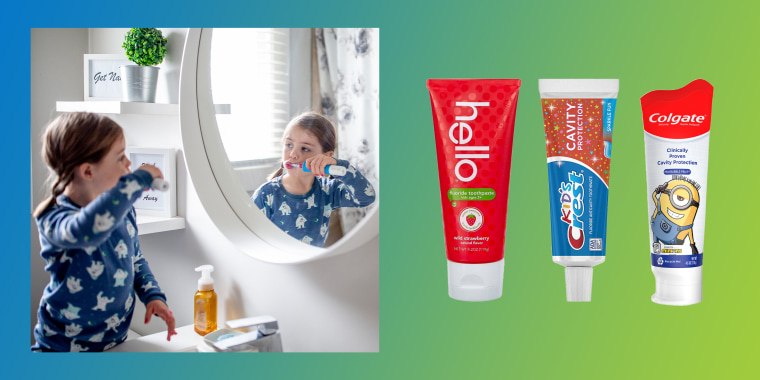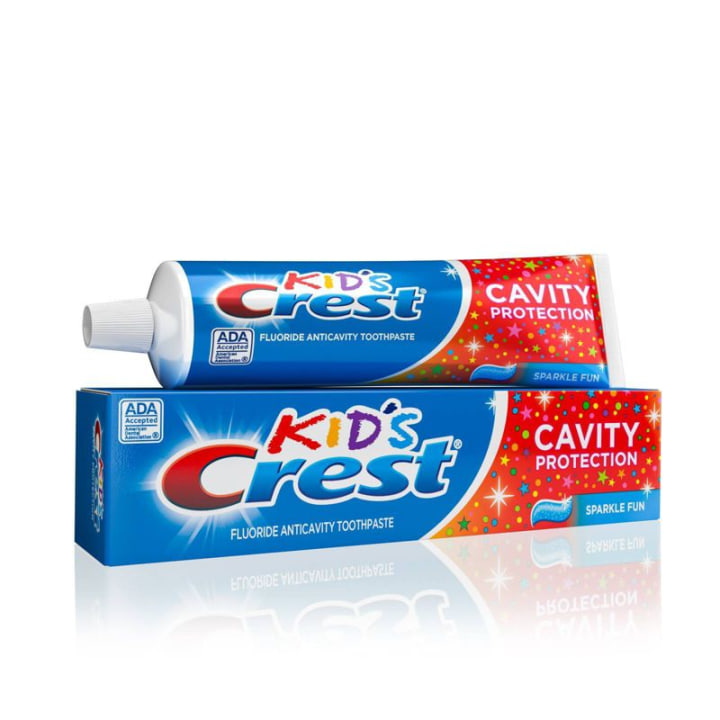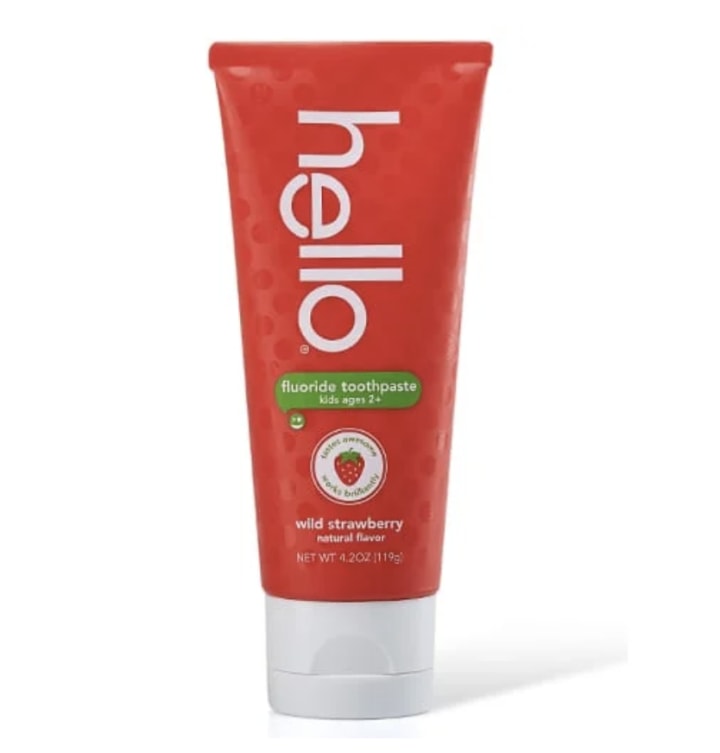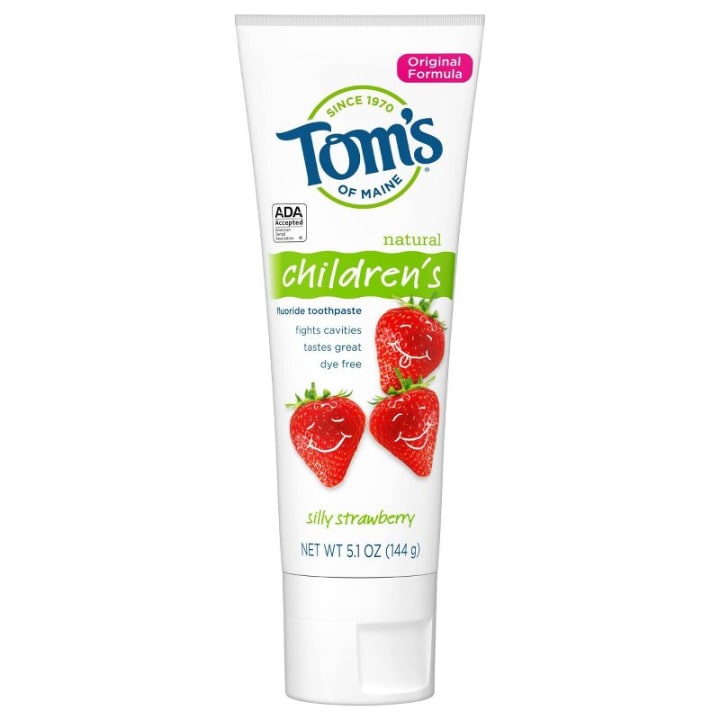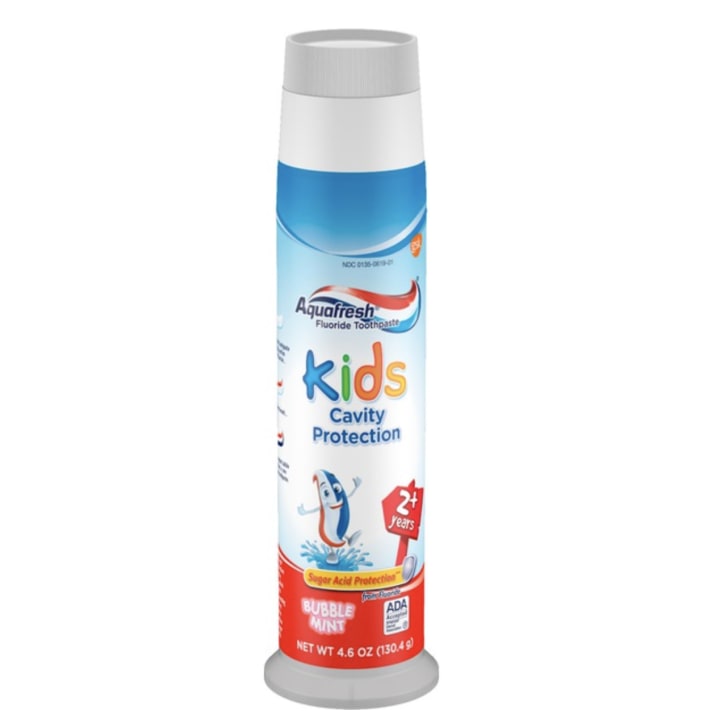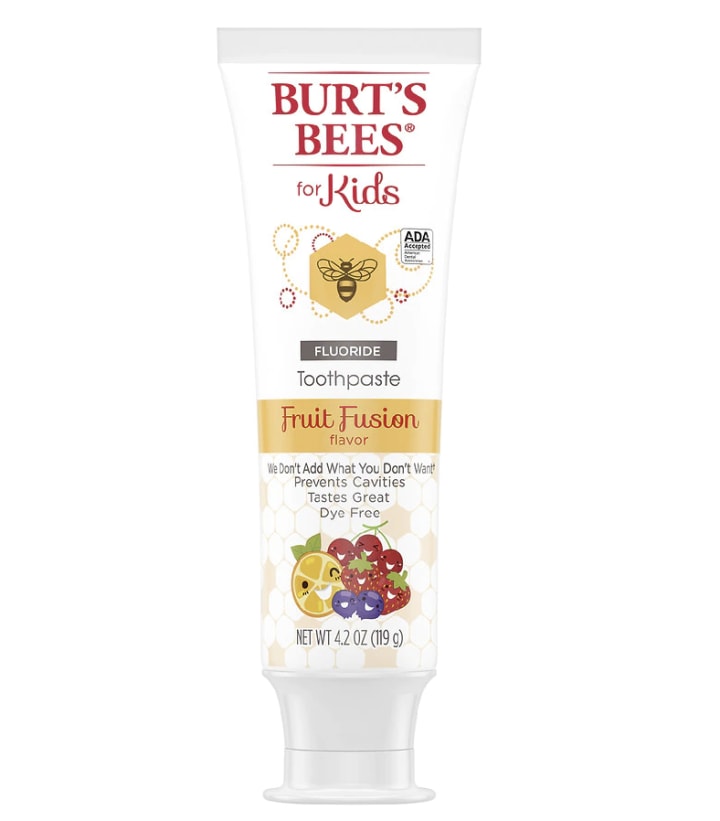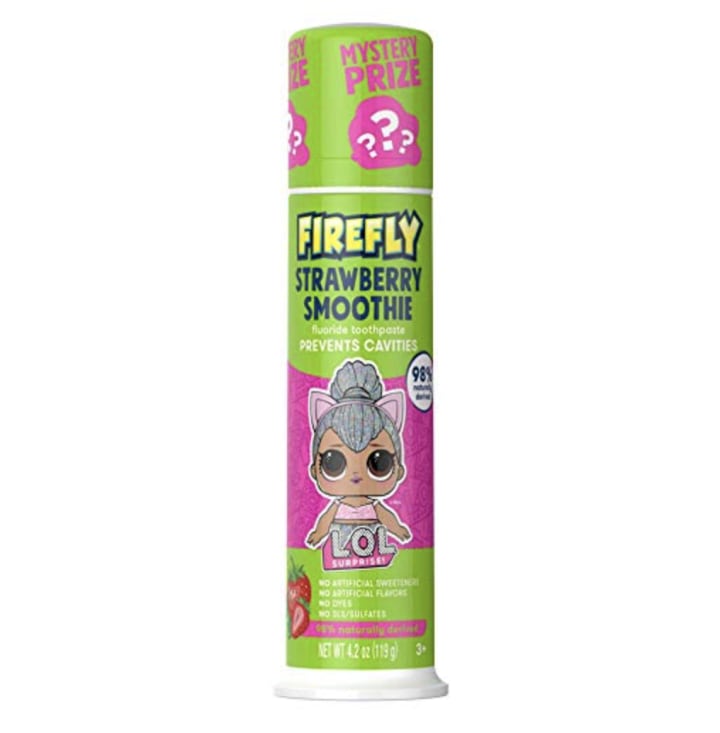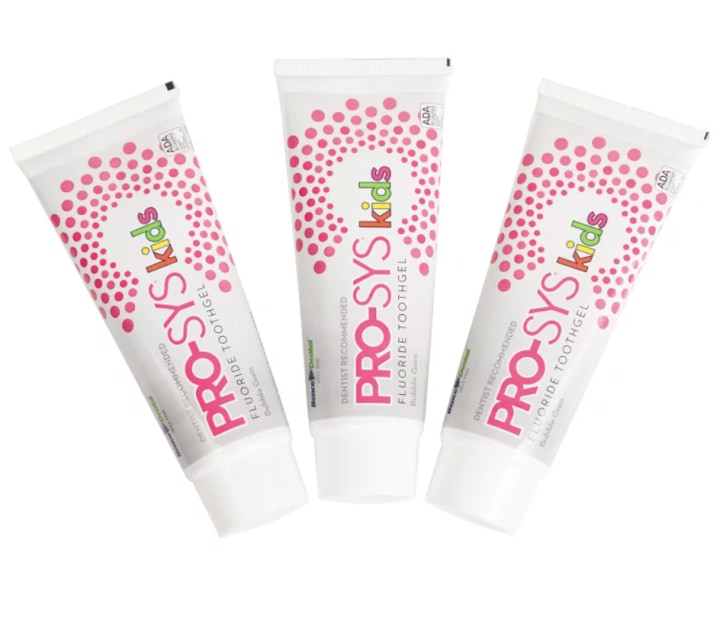The American Academy of Pediatric Dentistry says that parents should start using toothpaste with fluoride to brush their child’s teeth as soon as their first tooth appears — not only does this help prevent cavities and gum disease, but it also gets kids used to brushing from a young age. And while some toothpastes are specifically marketed toward kids, dentists told us that it doesn’t matter whether you use a kids toothpaste or an adult one.
“Choose a toothpaste your child can tolerate,” said Dr. Amr Moursi, AAPD president-elect and a professor at the NYU College of Dentistry. “Whether it’s labeled and marketed [for] children or adults, it doesn’t really matter.”
SKIP AHEAD How to shop for kids toothpaste | When to start using fluoride toothpaste
Just like when you shop for adult toothpaste, there are two important features experts recommended looking for while shopping for kids toothpaste: the American Dental Association Seal of Acceptance and the ingredient fluoride, which all ADA-accepted toothpastes contain. After that, it’s about finding a toothpaste your child likes to use — in addition to an appropriate toothbrush — since this encourages them to get into the habit of brushing their teeth. That’s where kids toothpaste often comes in: Products developed with children in mind are usually more flavorful and colorful, and may even have popular cartoon characters on the packaging.
We talked to dentists about how to shop for kids toothpaste and rounded up a handful of options that meet expert guidance.
Best toothpastes for kids
To recommend the options below, we referenced a list of kids toothpastes with the ADA Seal of Acceptance. All of the kids toothpastes we recommend contain fluoride, per dentists’ advice.
Colgate for Kids Toothpaste
Flavor: Bubble Fruit
Size: 4.6 ounces
Crest Kids SparkleFun
Flavor: Bubblegum
Size: 4.6 ounces
Hello Kid’s Fluoride Toothpaste
Flavor: Wild Strawberry or Bubble Gum
Size: 4.2 ounces
Tom’s of Maine Children’s Toothpaste
Flavor: Silly Strawberry
Size: 5.1 ounces
Aquafresh for Kids Toothpaste
Flavor: Bubble Mint
Size: 4.6 ounces
Burt’s Bees for Kids Fluoride Toothpaste
Flavor: Fruit Fusion
Size: 4.2 ounces
Firefly Natural Anticavity Fluoride Toothpaste
Flavor: Strawberry Smoothie and Bubble Blast
Size: 4.2 ounces
Firefly’s kids toothpaste boasts a lever you push down to dispense the paste.
PRO-SYS Bubblegum Toothpaste for Kids
Flavor: Bubble Gum
Size: 4 ounces
Is there a difference between kids and adult toothpaste?
When comparing kids and adult toothpastes, Moursi said “there really is no difference in effectiveness.” They both contain a similar concentration of fluoride to prevent cavities and clean teeth in the same way.
Children’s toothpaste is mostly different in terms of its appeal and how it’s packaged. “Children’s toothpaste generally contains flavors that are approachable for kids, fun marketing and tube sizes that are easier for children to hold,” said Dr. Kate Zoumboukos, a dentist at SW Austin Dental.
Moursi also noted that some children’s toothpastes contain a stronger flavor than adult toothpaste. But kids don’t always like the taste of highly flavored toothpaste, and Moursi said he’s heard children describe it as “spicy.” This is one reason you might consider choosing an adult toothpaste for kids — it’s usually more mildly flavored.
How to shop for kids toothpaste
Because kids and adult toothpastes are so similar, dentists’ guidance around shopping for them is almost identical. Like adult toothpaste, kids toothpaste must meet two criteria:
It must have the ADA Seal of Acceptance, which Moursi said is “the gold standard” when it comes to choosing dental products. When you see that seal on a toothpaste’s packaging, it means the brand submitted data and other materials to the ADA, causing the organization to determine that the product meets specified safety and efficacy requirements.
It must contain fluoride, which is an ingredient that dentists told us is proven to reduce your risk for cavities. All toothpaste that earns the ADA Seal of Acceptance is made with fluoride and does not contain flavoring agents like sugar that can cause or contribute to tooth decay.
“Otherwise, it’s just a matter of personal preference and taste,” Moursi said.
While you won’t see specialized kids toothpaste for teeth whitening, anti-tartar and other needs, you may see kids options marketed as “natural” while shopping. “Currently, the FDA does not define the term ‘natural toothpaste’ which leaves consumers to define what natural means to them,” Zoumboukos explained. She noted that it’s common for these “natural” toothpastes to be free from artificial flavors, ingredients, preservatives, sweetness and colors. Ultimately, whatever causes a brand to call their toothpaste “natural” won’t impact its effectiveness so long as the product has the ADA Seal of Acceptance.
When should children start using toothpaste with fluoride?
The AAPD recommends children start using toothpaste with fluoride as soon as their first tooth appears. Moursi said this is usually around six months, but for some kids, it can be even younger.
Dr. Breno Reboucas, a professor at the Boston University School of Medicine, said you should use a dot of toothpaste the size of a grain of rice to brush a baby’s tooth — while such a small amount of toothpaste may not seem like much, Moursi said there’s enough fluoride in it to prevent cavities. Then, around age three, Reboucas said you can progress to using a pea-sized amount of toothpaste to brush a child’s teeth.
If your child uses kids toothpaste, Reboucas said there’s no specific age at which you need to help them transition to adult toothpaste. He said the transition is usually dictated by kids’ preferences and whether additional dental needs arise — for example, if a child develops tooth sensitivity and their dentist recommends a toothpaste made for sensitive teeth, you’ll probably have to go with an “adult” option.
Catch up on Select's in-depth coverage of personal finance, tech and tools, wellness and more, and follow us on Facebook, Instagram and Twitter to stay up to date.
